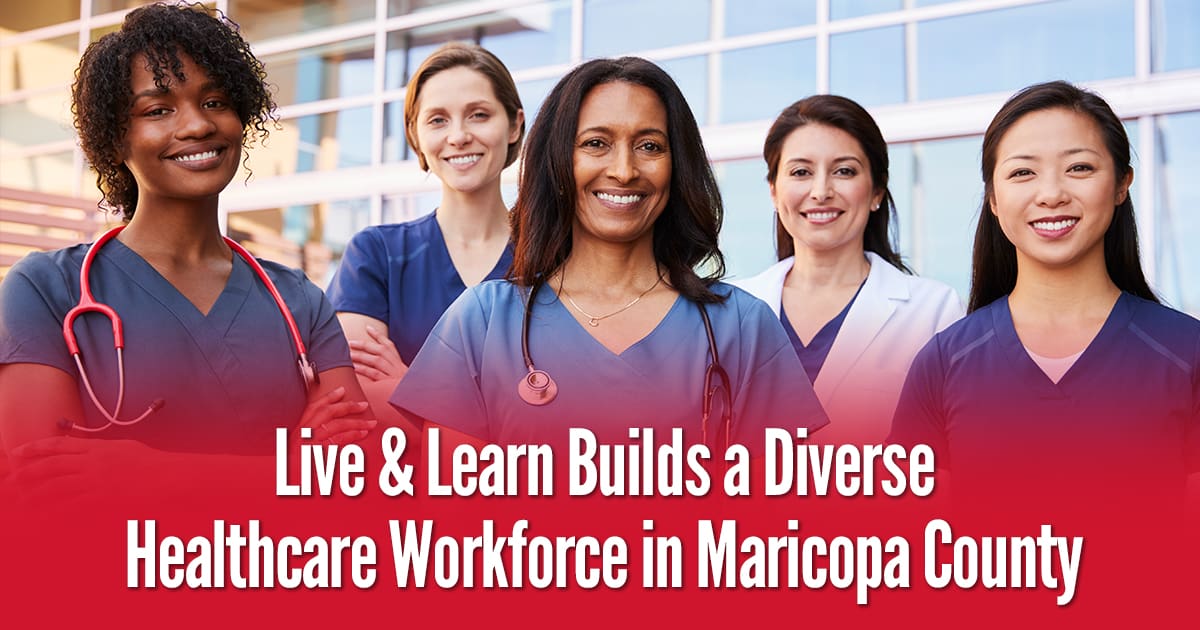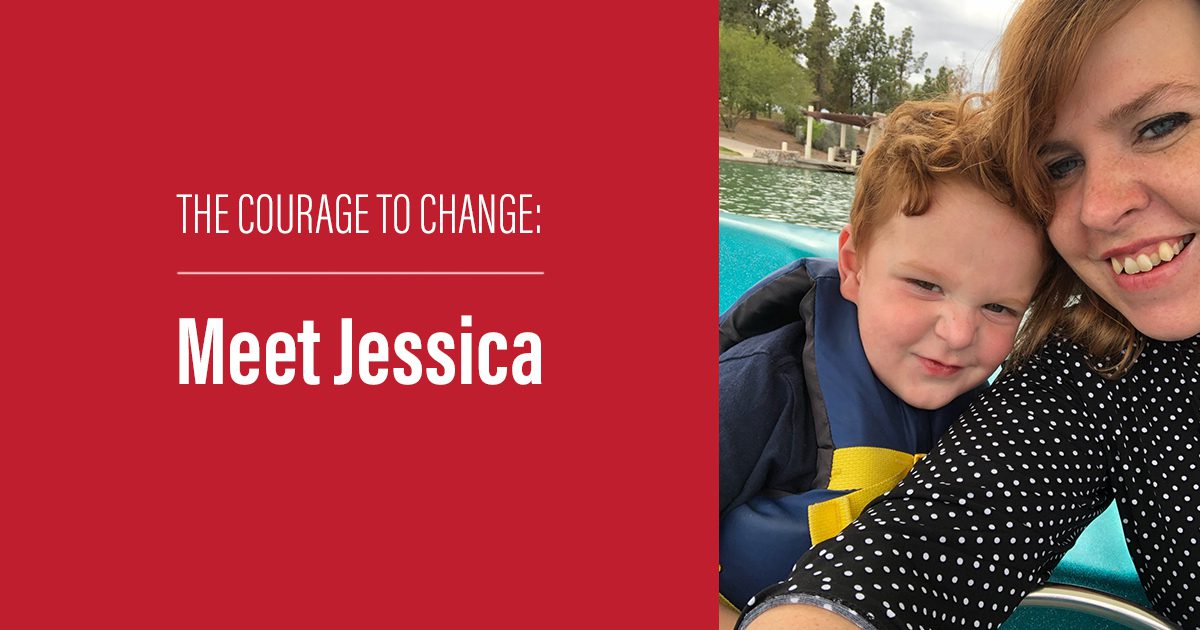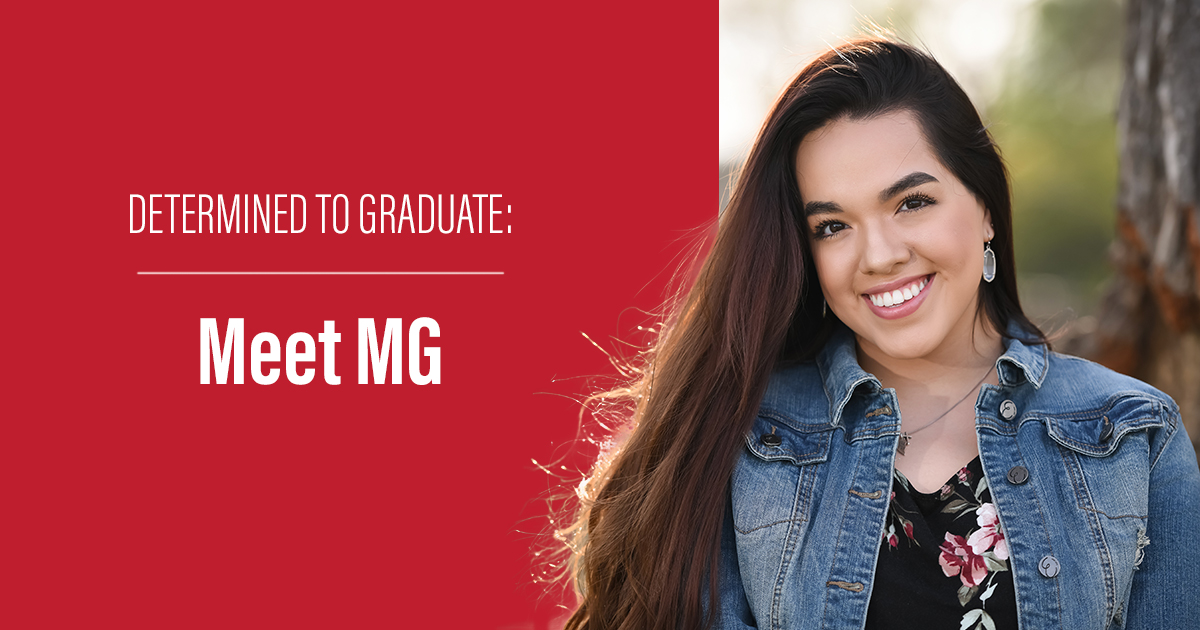A central pillar of the Live & Learn program is to help women experiencing generational poverty begin professional careers. Each year, about 33% of Live & Learn women choose to pursue a career in healthcare. This is a prudent option for many women because it offers a fast track to employment with plentiful opportunity for advancement. Yet, there is another, larger-scale benefit achieved when the diverse women of Live & Learn enter the healthcare workforce. By building a diverse healthcare workforce in Maricopa County, Live & Learn combats the profound inequalities in healthcare that exacerbate broader social inequalities.
Healthcare careers are often an ideal path for women coming out of generational poverty. Employment demand is consistently high in healthcare, and within months women can earn certifications that lead to secure jobs with good pay. Live & Learn leverages partnerships with local educational and training programs to help women enroll in school, access scholarships, and successfully earn their certifications and degrees. Yet, the benefits of helping women enter the healthcare field go far beyond the impact to the individual women and their families.
Helping Live & Learn women enter the healthcare field is deeply important to the well-being of the broader community. Racial diversity in healthcare staff is one of the strongest factors for overcoming disparities in access to healthcare. Indeed, for low-income, immigrant, and
minority populations, the greatest barrier to healthcare is the industry’s lack of diversity, cultural sensitivity, and shared language.
We see it in every area, from healthcare to social services to education. People seeking care find it easier to trust that person in authority when they see themselves reflected back culturally and experientially. If we can create a more representative healthcare workforce in Maricopa County, it will dramatically enhance the community’s overall health.
— Stephanie Castillo, Live & Learn Program Manager
The Live & Learn women entering healthcare careers come from populations currently underrepresented in the field. Characteristic of generational poverty, over 85% of Live & Learn women are women of color, and 40% are bilingual. Many have experienced homelessness. Many are first- or second-generation Americans. Most are single mothers. Each year, Live & Learn empowers about 80 such women to enter the healthcare field. These women secure employment in local clinics, hospitals, and doctors’ offices, where they add much-needed perspective and diversity that reflects the broader community.
Over the past twenty years, surveys have shown again and again that healthcare staff in the United States consists overwhelmingly of white individuals from middle socioeconomic classes, with clear divisions of roles along gender lines. Furthermore, studies show that this lack of diversity, representation, and cultural understanding are not peripheral to public health, and it is not just a political issue: it is a medical issue, leading to worse health outcomes for the most vulnerable people. It is a leading factor of healthcare inequality.
Live & Learn’s work to help women of diverse backgrounds enter the healthcare workforce is an important benefit to the broader community. When a Spanish-speaking mother feels like she can communicate with her children’s pediatrician because the nurse is a Spanish-speaking Live & Learn woman, she is more likely to keep bringing her children for care. When a Live & Learn woman is a physical therapist, and she can meet a low-income patient with cultural understanding, he is more likely to continue with his therapy. When the Live & Learn woman on staff at a doctor’s office understands the circumstances faced by a family in poverty, they can foster honest, trusting communication. By helping women enter the healthcare field, Live & Learn not only helps those women break the cycle of generational poverty and pursue fulfilling careers with stable income; Live & Learn addresses the systemic inequality of our healthcare system.
https://www.aapcho.org/wp/wp-content/uploads/2012/11/NeedForDiversityHealthCareWorkforce.pdf
https://www.ncbi.nlm.nih.gov/pmc/articles/PMC6571328/
https://bhw.hrsa.gov/sites/default/files/bhw/nchwa/diversityushealthoccupations.pdf
https://www.healthaffairs.org/doi/full/10.1377/hlthaff.21.5.90



